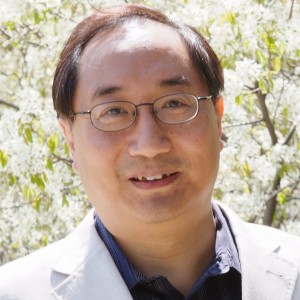 Xian-He Sun, computer science chair and professor, has introduced a new mathematical model for supercomputing that could greatly reduce the current data access delay and increase speed by up to 100 times through parallel memory access.
Xian-He Sun, computer science chair and professor, has introduced a new mathematical model for supercomputing that could greatly reduce the current data access delay and increase speed by up to 100 times through parallel memory access.
In 1990, Sun co-developed Sun-Ni’s law, or memory-bounded speedup, one of three main microprocessor laws along with Amdahl’s law and Gustafson’s law. His new Concurrent Average Memory Access Time (C-AMAT) model promises to cut the penalty associated with accessing cached data, resulting in increased speed that will create a “break” in the memory-wall problem.
Memory speed currently is about 400 times slower than CPU speed, forming a wall for data movement and processing. The data tsunami compounded with the memory-wall problem makes data management the primary concern of computing systems today, in terms of both performance and energy consumption. Average Memory Access Time states that if the desired data is in cache (hit), data is gotten quickly; otherwise (miss), there is a cache miss penalty. Due to the memory-wall problem, the miss penalty will be big. So, all the architecture and algorithm design currently focuses on reducing cache misses.
Sun’s C-AMAT, however, states that with parallel memory access, depending on if there is a hit occurring at the same time, a miss may or may not have a penalty. C-AMAT changes the design focus of architectures and algorithms from reducing cache miss to increasing data access parallelism. It provides a formulation to evaluate the effectiveness of the concurrency of each memory layer toward the final performance of parallel data access.
Sun has been focusing on memory access issues for more than 10 years, with his research supported by the National Science Foundation and other government agencies. He is a Fellow of IEEE for his contributions to memory-bounded performance metrics and scalable parallel computing, among many honors.
A paper on C-AMAT is forthcoming from the Institute of Electrical and Electronics Engineers. Read more.
